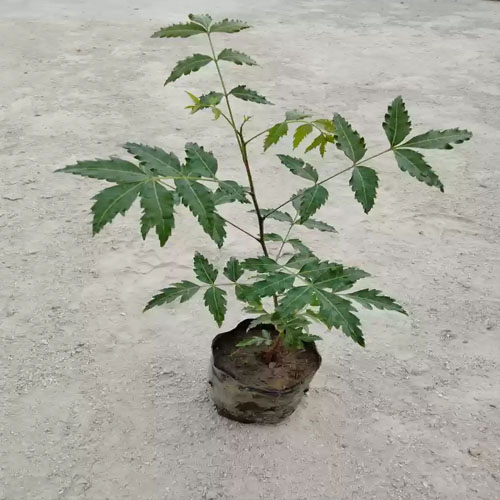Neem Plants
Neem (Azadirachta indica) is a highly valued tree known for its medicinal properties, environmental benefits, and versatility. Here are some key details about neem plants:
-
Appearance: Neem trees can grow up to 15-20 meters tall and have a dense, spreading canopy. They have pinnate leaves with a distinctive, glossy green appearance. The tree also produces small, white to yellowish flowers and oval, yellowish-brown fruits.
-
Leaves and Bark: Neem leaves and bark are renowned for their medicinal properties. The leaves are often used in traditional medicine for their anti-inflammatory, anti-fungal, and antibacterial properties.
-
Uses:
- Medicinal: Neem is used in various traditional medicine systems for treating conditions such as skin diseases, digestive issues, and infections. Neem oil, derived from the seeds, is used in skincare and haircare products for its antibacterial and antifungal properties.
- Agricultural: Neem is used as a natural pesticide and insect repellent. Neem oil and neem-based formulations can help control pests and diseases in crops.
- Environmental: Neem trees are valued for their ability to improve soil health, reduce soil erosion, and provide shade. They are also used in reforestation projects and as a windbreak.
-
Growing Conditions: Neem trees are well-suited to tropical and subtropical climates. They prefer well-drained soil and full sun but are quite drought-tolerant once established. They can grow in poor soil conditions and are relatively low-maintenance.


